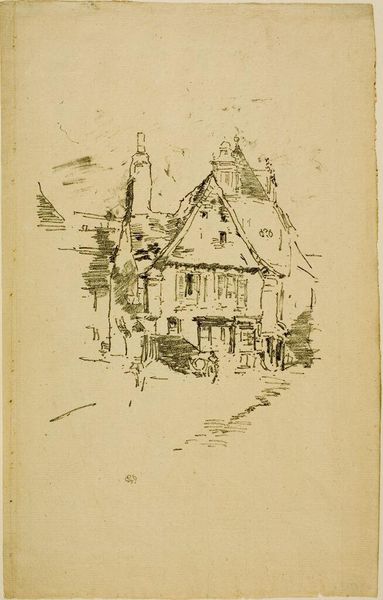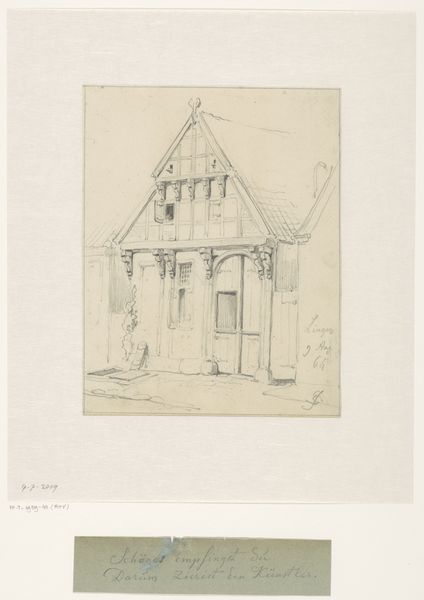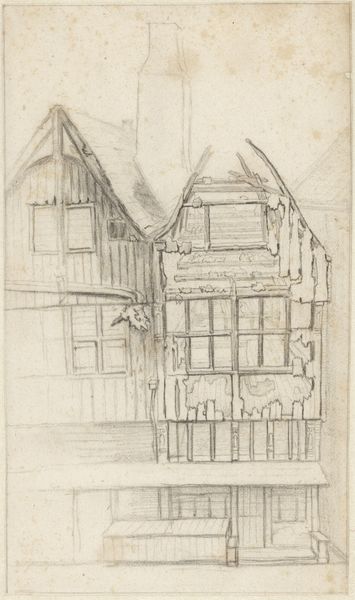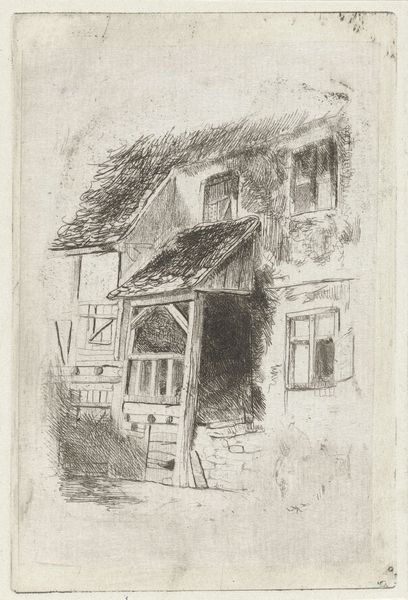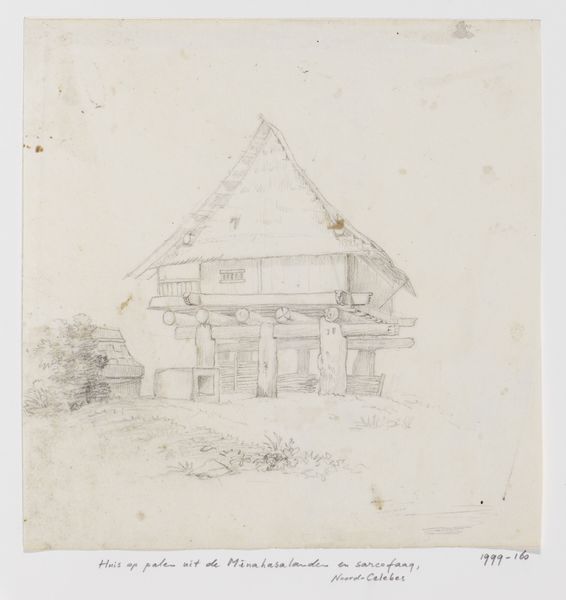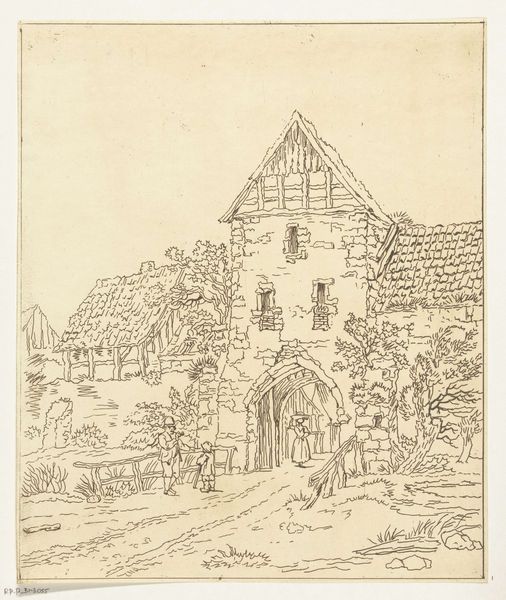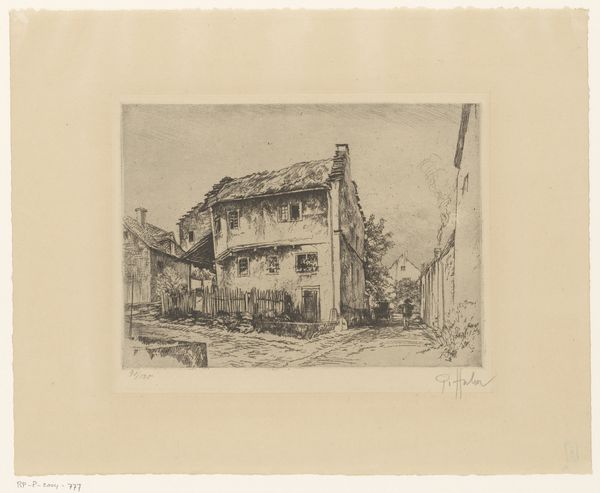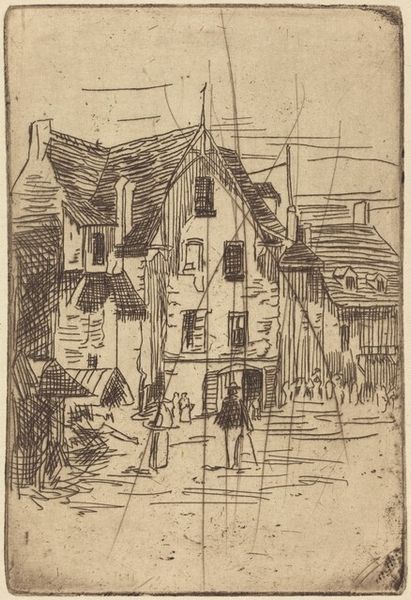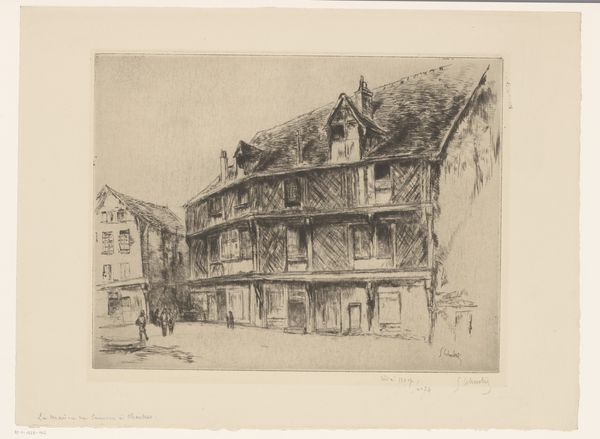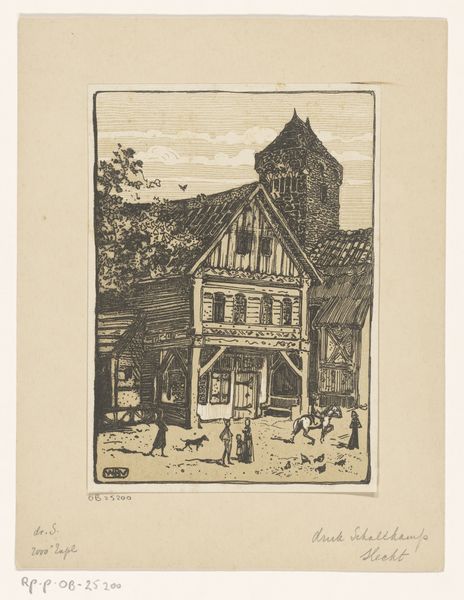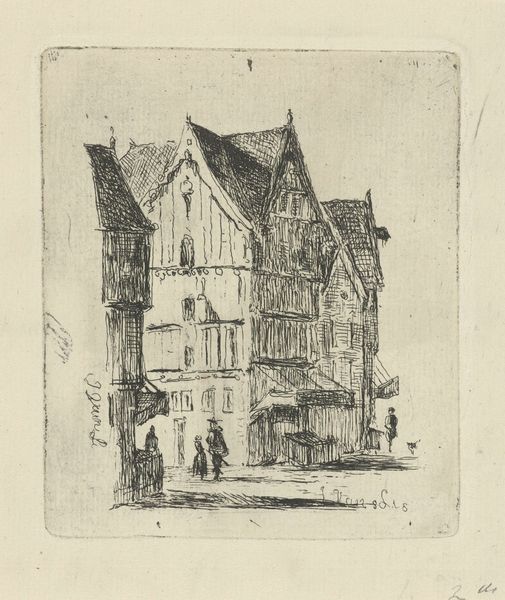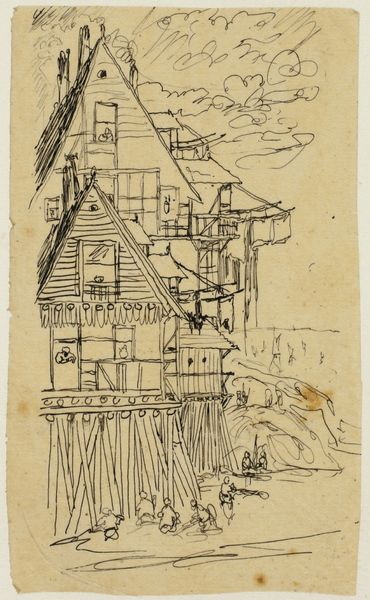
drawing, ink, pencil, architecture
#
drawing
#
etching
#
ink
#
romanticism
#
pencil
#
cityscape
#
architecture
Dimensions: 214 mm (height) x 181 mm (width) (bladmaal)
Curator: Here we have "Studie af en bindingsværksbygning," or "Study of a Half-Timbered House," a drawing rendered in ink and pencil, likely dating from the 1840s, by Dankvart Dreyer. What’s your first impression? Editor: Austere. There's an undeniable simplicity here. The bare lines capturing this building make it feel like a ghost of architecture. It evokes a strong sense of nostalgia, or perhaps even a melancholic resignation to time. Curator: Interesting you mention austerity. The drawing showcases the intricate, but functional construction. For Dreyer, a half-timbered house was clearly more than just a building; it served as a canvas to record the essence of vernacular Danish design. I sense a celebration, rather than resignation, in his meticulous rendering of the wooden beams and tiled roof. Editor: Perhaps, but even the celebration feels subdued. Look how he isolates the building from any vibrant context. The blank background removes it from everyday life, pushing the architecture itself forward, transforming it into an almost symbolic structure devoid of community. This might reveal Romantic leanings to idealize architecture in times gone by. Curator: It’s undeniable that a certain isolation is present in Dreyer's cityscapes. We have to also recall that 1840s Denmark experienced significant social shifts as people migrated towards urban centers. Nostalgia for the countryside and for pre-industrial structures resonated deeply at that moment. Buildings like this connected to a cultural memory and, on the psychological level, of a need to reclaim what was believed to be vanishing. Editor: So the building is not just a building, it’s a symbol laden with social and political context? This architectural form carries the emotional weight of a shifting society clinging to a mythologized past? Curator: Precisely! The house, rendered through a particular artist’s perception, becomes part of a cultural narrative. Editor: Seeing it that way gives it far more resonance. It's an ordinary scene made powerful through history and memory. Curator: Exactly. Now I see the work has given me a new connection to how ordinary things turn into meaningful objects by the forces that be.
Comments
No comments
Be the first to comment and join the conversation on the ultimate creative platform.
